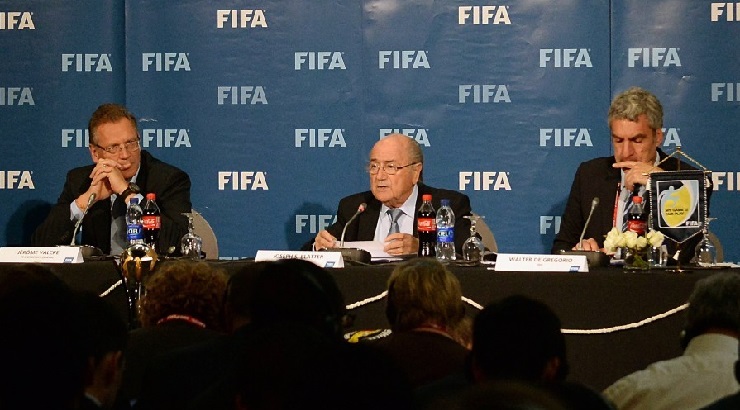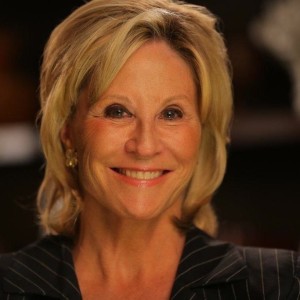FIFA: Bring Increased Representation Of Women Into All Decision-Making Bodies
Republished with permission: check out a recent article by Donna De Varona, broadcaster and campaigner for women’s rights in sports.
 Sunday, November 22, 2015 – Leading up to the US hosted 1999 FIFA Women’s World Cup I served as the chairman of the organizing committee. As one who had spent decades in the Olympic World it was both a daunting challenge and a privilege to take part in what would become the most successful Women’s World Cup in history.
Sunday, November 22, 2015 – Leading up to the US hosted 1999 FIFA Women’s World Cup I served as the chairman of the organizing committee. As one who had spent decades in the Olympic World it was both a daunting challenge and a privilege to take part in what would become the most successful Women’s World Cup in history.
Alan Rothenberg, the chairman of the 1994 Men’s World Cup, offered me the role after we had served together in staging that tournament. He was well aware of my work as President of the Women’s Sports Foundation and in the United States Congress, on legislation that made it illegal to discriminate on the basis of sex in any educational education or program that accepts federal funds.
The law was enacted in 1972 and has simply changed the sporting landscape in the US. For the very first time girls and women were offered elite sports programs in schools, as well as sports scholarships in universities across the country.
Before this law was enacted only one in 27 girls played sports, now one in three girls play sports.
Soccer is now an institution in America with 92 percent of NCAA colleges taking part, confirming that for real change to take place leaders must take strong steps in the way of reform.
As one young journalist remarked at a recent IOC media workshop: “Words are weapons.” Words that are crafted into legislation and into the language of reform have the power to make FIFA the most inclusive and impactful sport federation in the world. There is no other sport that has the convening power of football.

Yes, FIFA is in crisis. Its organizational structure is out of date, cumbersome and exclusionary. However, out of crisis can come new vision but only if the leadership has the courage to do what must be done to create a bright future for football.
As drastic as this may sound, if FIFA’s leadership is truly invested in the good of the sport and the athletes they represent, then the FIFA organizational mold must be broken and reshaped. By way of example, in early 2000 the entire board of the United States Olympic Committee resigned when organizational bloat was undermining good governance. The USOC Olympic committee was restructured and is now functioning better than ever.
The FIFA Reform Committee has met in Switzerland to discuss and finalize proposals on how to reform corruption-plagued FIFA. One of the proposals, titled “FIFA, football and women: why reform must specify inclusion and investment” proposes to bring increased representation of women into all decision-making bodies, and to ensure non-discriminatory resourcing for the development of the sport for women and girls.
Given the issues facing the beleaguered governing body, if I were able to ensure that one reform were implemented – JUST ONE – this would be it.
Why? Studies indicate that the more diverse the leadership on the board of an organization, the more productive. Additionally for women to have an impact on a board and help provide a cultural shift they must have 30 per cent participation. Targets and quotas are necessary. Additionally, a fair share of investment, resources and prize money would help transform the organization from the top down and bottom up.
I competed during an Olympic era when athletes were seen and not heard and women were offered less than one third of the opportunities than men. There were no team sports and no women serving on the IOC. Athletes had no voice or vote.
I marvel at the progress that has been made on the field of play for women in the Olympic arena. This has had a phenomenal impact on the business of the Olympic brand. However, progress was not made in a vacuum. Corruption and failure to deal with doping were two issues that forced change within the IOC structure. As soon as athletes and women were given a voice and a vote, the IOC began to transform, albeit it still struggles, because of its very structure, to bring enough women into leadership positions.
There is no argument that for FIFA to earn back credibility a culture shift must take place. For decades, its leadership has been drawn almost exclusively from the ranks of rich and powerful men who serve without term limits or transparency.
If FIFA is to have any chance at convincing the world that it’s serious about reform and rehabilitating its brand, the organization needs to embrace new leadership and consider recruiting outside the football fraternity. New names and faces need not necessarily be female, but given soccer’s male profile, ensuring 30 per cent of women will bring gender diversity that is sorely missing.
Second, of the many sports on the international stage, soccer stands out because of the large gap between popularity (high) and female participation (low). Non-discriminatory funding would ensure the doors are truly open for girls from childhood. This would begin to create a new cultural equilibrium.
FIFA is at a crossroads. In order to lay claim to all the good the sport offers, this is the time for the leadership to take bold steps. To take advantage of this time in history when the crisis facing the organization provides an opportunity for FIFA to truly become the most progressive, transparent inclusive sports organization in the world.
 Donna de Varona was the youngest swimmer to compete in the 1960 Olympics in Rome at just 13 years old. At Tokyo 1964, she earned gold medals in the 400 meters individual medley and as a member of the 4x100m freestyle relay team.
Donna de Varona was the youngest swimmer to compete in the 1960 Olympics in Rome at just 13 years old. At Tokyo 1964, she earned gold medals in the 400 meters individual medley and as a member of the 4x100m freestyle relay team.
At the age of 17, she appeared on ABC’s Wide World of Sports, becoming the youngest and one of the first women sportscasters for a national network. Her groundbreaking career has earned her an Emmy, two Gracies and the opportunity to cover a wide variety of sports events including 17 winter and summer Olympic games.
A promoter of women in sports, in the mid-1970s, she joined Billie Jean King in establishing the The Women’s Sport Foundation.






